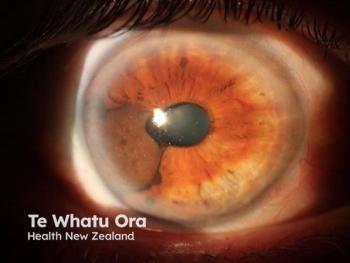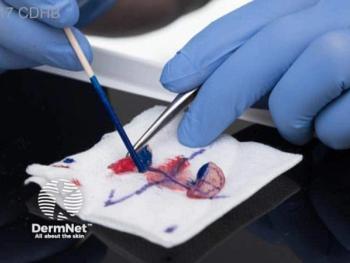
- Dermatology Times, January 2022 (Vol. 43. No. 1)
- Volume 43
- Issue 1
Digital Device Aids Skin Cancer Diagnostics
Skin cancer dermoscopy is getting a hightech overhaul as the scope of innovation broadens from a singular focus on the stand-alone product to the development of a comprehensive medical, patient care, and workflow management platform.
Next-generation launches such as the FDA-cleared Demetra (Barco) skin-imaging platform integrate advanced tools into a handheld device aimed at maximizing diagnostic and monitoring accuracy with the optimized accessibility of cloud storage and seamless flow of information into electronic health records (EHRs).
Leveraging that combined technology answers unmet needs on various fronts, Jodi E. Ganz, MD, told Dermatology Times®. She is managing partner of Olansky Dermatology & Aesthetics, with offices in Buckhead and Roswell, Georgia.
“Analog dermatoscopes pose some challenges in regard to skin cancer,” Ganz said. One is that traditional devices generally use white light exclusively. Demetra signals a new direction for image capture with either white or multispectral light.
“Multispectral imaging lets me see a lot more of the architecture of the surface change,” Ganz said. “It better reveals some subtler features of cell structure such as areas of higher relative concentration of pigment, such as melanin, and areas with a higher relative concentration of blood within the lesion. I wasn’t seeing this with the naked eye and, sometimes, not even with my regular scope.”
High-tech imaging systems such as Demetra add next-step functionality that not only captures more detailed visuals of the lesion and its cell structure but also provides access to analytical information to assess the patterns presented in the imaging. Rolled out in July 2021, Demetra’s skin parameter maps (SPMs) can provide better insight into the inner structures of lesions. Driven by multispectral imaging technology, SPMs parse the dermatoscopic image into 3 individual maps showing pigment, blood, and scatter contrast.
Others center on imagery definition and accessibility, according to Ganz. “I never found a great way to capture the dermatoscopic images I was seeing with a traditional scope,” she said. Ganz also cites problems with imaging multiple lesions in large skin areas such as the back and narrowly targeted sites such as fingernails and toenails, as well as parts of the body that are difficult to photograph clearly.
“I had no way to correlate the up close view of the lesion I was examining with a sharp enough image to make sure the pathologist would see what I saw on the other end,” Ganz said
Nor was it easy to show patients detailed features of the lesion or cell structure to help them understand what those characteristics indicate in terms of being malignant or benign. “Because Demetra has a screen like a smartphone, I can show the patient exactly what I’m seeing in the exam,” Ganz said. “If it is as simple as a keratosis, I can use the image and information it offers to reassure the patient. However, if a cell is suspicious, I can explain exactly why I recommend a biopsy of that lesion. I find patients are much more willing to have the biopsy after seeing the risk indicators.”
Digital dermatoscopes allow dermatologists to appreciate changes in lesions using the comparison and lesion mapping features. Also, retaking the image at a follow-up visit is easily accomplished by lining up the original lesion with the saved ghost image from the original image.
“To me, as a dermatologist, the issue with dermoscopy is related to having a reputable dermatoscope and to the skill level of being able to ‘read’ and analyze what is seen within the skin with that particular instrument. They must become proficient in understanding the meanings of what is being seen at the skin surface,” said Michael Gold, MD, founder of Gold Skin Care Center, Advanced Aesthetics Medical Spa, The Laser & Rejuvenation Center, and Tennessee Clinical Research Center, all in Nashville.
The technology involved in creating advanced digital devices transforms diagnostic equipment
from an offline aid to the dermatologist to one that allows practice managers to facilitate information gathering and storage. “With an analog system, there is no integration [with other systems in the practice] other than verbal notes from the clinician,” said Trent Renta, practice manager at Olansky Dermatology & Aesthetics, with offices in Buckhead and Roswell, Georgia. “With these new devices, images are taken and automatically uploaded to both the device’s EHR and integrated with our practice’s EHR software, where that information is stored as a record of the patient’s entire history.” By automating part of the process of image and information collection, the devices streamline practice workflows, allowing the team to spend less time inputting information into patients’ EHRs.
Having access to that information also benefits patients. By, in some cases, being able to correctly diagnose a lesion as benign, dermatologists may be able to help patients avoid unneeded biopsies and reassure them that mapping and following the lesion is the correct course, according to Gold.
Ganz outlined the opposite scenario: that of a patient who already had some melanomas and then presented with a large pigmented lesion on her face. Understandably, she did not want it biopsied unless necessary, and Ganz had been monitoring the lesion with measurements and photographs. Using an advanced digital imaging tool, though, Ganz saw pigment variation that posed a concern. When shown the image, the patient agreed that it needed to be removed and biopsied, Ganz said.
The power of the cloud data means the advanced tool on devices can continue to improve with use. “What’s next is continually using the data and imagery received to increase even further the sensitivity and specificity [on new] technology,” Gold said.
Disclosures
Ganz reported no relevant disclosures.
Gold is a consultant for Aclaris Therapeutics, Aerolase, Alastin, Allergan, Alma Lasers, Almirall, Bio Frontera, Brickell Biotech, Candela, Celgene, Clarisonic, Croma, Cutanea, DefenAge, Dermira, DUSA Pharmaceuticals/Sun Pharma, EndyMed, Erchonia, Essence Novel, Exeltis, Galderma, IntraDerm, Invasix, Johnson & Johnson, Joylux, Kadmon, L’Oréal, Lumenis, Merz, MTF Biologics, Novartis, Pierre Fabre, Prollenium, Promius, Revision, Sensus, Senté, SkinCeuticals, Stratpharma, Suneva Medical, Thermi Aesthetics, Valeant, Viviscal, and Zimmer; on the advisory board of: Aclaris Therapeutics, Aerolase, Almirall, Bioderma, Croma, Cutanea, Erchonia, Essence Novel, Evolus, Galderma, IntraDerm, Johnson & Johnson, Prollenium, Sensus, Senté, Stratpharma, and Thermi Aesthetics; and has received research funding from: Aclaris Therapeutics, Alastin, Biofrontera, Brickell Biotech, Croma, Cutanea, Dermira, Invasix, Kadmon, Merz, MTF Biologics, Prollenium, Revision, and Valeant.
Articles in this issue
almost 4 years ago
HIPAA Violation, COVID-19 and the Lawsuitalmost 4 years ago
Understanding Cosmetic Claimsalmost 4 years ago
2022 Game Changers: Watch-worthy Drugs, Devices, and Technologyalmost 4 years ago
Impact of Itch Sparks New Pipeline Directionalmost 4 years ago
Top 20 Trending Stories of 2021almost 4 years ago
Lasers Shine New Light on Acne Therapyalmost 4 years ago
New Drugs, Devices Could Revolutionize Pigmentary Treatmentabout 4 years ago
Identifying Clinical Manifestations of Plaque Psoriasisabout 4 years ago
The Role of Emollients and Moisturizers in EczemaNewsletter
Like what you’re reading? Subscribe to Dermatology Times for weekly updates on therapies, innovations, and real-world practice tips.

















